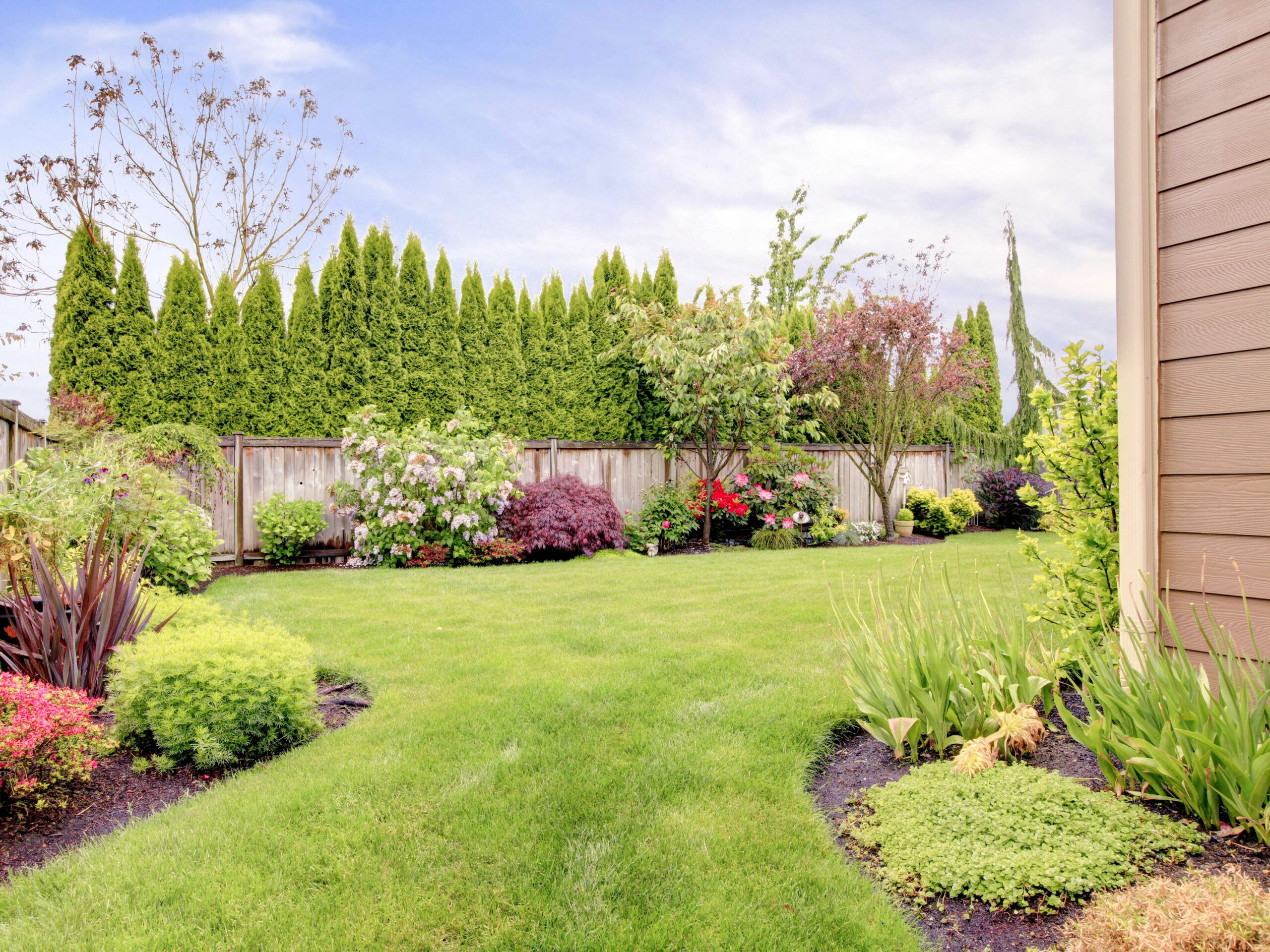Well-executed landscaping has plenty of benefits beyond just looking good. It can create shaded areas for relaxation, increase property value, and support mini wildlife habitats. Proper landscaping also helps manage water runoff, prevents soil erosion, and promotes sustainability where possible. Our guide covers the basics of landscaping, including planning, design, and maintenance, to help you create an outdoor oasis.
Assess Your Property for Landscaping
Before starting a landscaping project, evaluate your property’s existing conditions and potential. This will help you create a thriving landscape tailored to your environment.
Existing Features and Structures
Analyze your property’s current layout, including buildings, trees, slopes, and any unique features, as these can be focal points or challenges in your landscape design. For example, a sloping lot might present an opportunity for a terraced garden, while existing mature trees can provide valuable shade and structure to your landscape.
Climate and Soil Conditions
Account for factors such as average temperatures, rainfall, and sunlight exposure. Perform a soil test to assess pH levels and nutrient content, which will guide your plant choices and soil enrichment strategy.
Plan Your Landscape Design
A well-planned design helps you better allocate resources and avoid costly mistakes during your project.
Setting Goals and Priorities
Do you want a low-maintenance yard, a lively garden for entertaining, or a private retreat? Think about how you’ll realistically use the space and which features matter most to you.
Creating a Budget
Establish a realistic budget for your landscaping project. Weigh initial installation costs and ongoing maintenance expenses. View this project as a property investment and consider what would increase or decrease home value.
Hardscaping vs. Softscaping Elements
Incorporate hardscaping and softscaping to create balance and function in your outdoor space. We’ll explain both design elements below.
Hardscaping
Hardscaping refers to the nonliving elements in your landscape, such as patios, walkways, retaining walls, and water features. These structures define the outdoor space and create visual interest. When planning hardscaping, choose materials that complement your home’s architecture and natural surroundings.
Softscaping
Softscaping encompasses your landscape’s living elements, like trees, shrubs, flowers, and grass. These components add color, texture, and life to your outdoor space. When selecting plants, consider their growth habits, upkeep, and interaction with other landscape elements.
Choosing the Right Plants for Your Landscape
Proper plant selection is key to creating a thriving, low-maintenance landscape that boosts your property’s beauty and functionality.
Native Plants
Native plants are well-suited to thrive in your local climate and soil conditions, making them easier to maintain and more pest and disease-resistant. They also support local wildlife by providing food and habitat. We recommend researching native plants in your area and incorporating them into your landscape design.
Tree Selection
When choosing trees, consider their mature size, growth rate, and potential roots or falling debris issues. Plant trees at the appropriate distance from your home and other structures to avoid future problems.
Water Management in Landscaping
Effective water management helps you maintain your landscape while conserving water.
Irrigation Systems
A well-designed irrigation system can save time and ensure your plants receive the right amount of water. Install a drip irrigation system for targeted watering or a smart sprinkler system that adjusts based on weather.
Xeriscaping for Water Conservation
Xeriscaping works by grouping plants with similar water needs, using mulch to retain soil moisture, and incorporating drought-tolerant plants into your design. This technique is beneficial in dry climates or areas prone to drought.
Adding Functional Spaces in Your Landscape
Your outdoor space should not only be beautiful but also meet your lifestyle needs. Here are some functional and fun ideas.
Outdoor Living Areas
Create a space that extends your home’s usable area, such as a patio for dining, a deck for relaxation, or a pergola for shade. Think about how these spaces will connect to your home and integrate with the surrounding landscape.
Play Spaces for Children and Pets
If you have children or pets, incorporate play and exercise areas into your landscape design. These could include a lawn for games, a sandbox for young children, or a designated pet area.
Landscape Lighting
Well-planned landscape lighting can enhance your outdoor space while improving safety and security.
Landscape Lighting Types
There are various types of landscape lighting, including path lights, spotlights, and accent lights. Each type serves a specific purpose, such as illuminating walkways or highlighting architectural features and plants.
Energy-Efficient Lighting Options
Opt for energy-efficient lighting options to reduce electricity consumption and maintenance costs. LED lights are an excellent choice, offering long life and low energy use. Solar-powered lights can be a good option for areas far from electrical outlets, providing subtle illumination without wiring.
Maintaining Your Landscape
Regular maintenance will keep your landscape in top condition. Follow our tips below to help.
Seasonal Maintenance Tasks
Each season brings different maintenance requirements for your landscape. Spring tasks include pruning, fertilizing, and planting annuals. Summer focuses on watering and pest control. Fall is ideal for planting trees and shrubs and preparing for winter. Winter maintenance typically involves protecting sensitive plants and planning for the coming spring.
Long-Term Care Strategies
Develop a long-term care plan for your landscape to ensure its continued health and beauty. This could include regular soil testing and amendment, periodic review and updating of your irrigation system, and ongoing plant health assessments. Create a maintenance schedule to stay on top of recurring tasks.
DIY vs. Professional Landscaping
Whether to tackle landscaping projects yourself or hire professionals depends on your skills, availability, and project complexity.
Do-it-yourself (DIY) landscaping can be rewarding and cost-effective—if you have the necessary skills and time. We recommend hiring a professional landscaper or landscape architect for more complex projects. Professionals bring expertise in design, plant selection, and installation techniques. They can also handle large-scale projects and often have access to a wider range of materials and plants.
